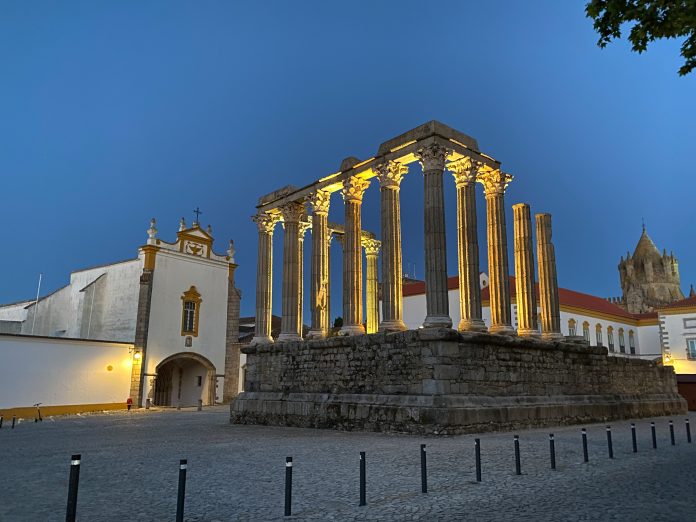“There’s no sense in going further – it’s the edge of cultivation.” Crossing the Tagus River and leaving Lisbon behind may feel strange to most. After all, what is even there? All the videos you watched and all the books you read about Portugal only highlight Lisbon and the Algarve as if nothing else existed between the two. And, with limited time left on your holiday, you start to wonder if it might be just a waste of time.
But that is exactly how the Alentejo will dazzle you. That forgotten region stuck between the bustling capital and the wonderful beaches down South is a land where time stands still, stretching as far as the eye can see.
Once you first reach the south bank of the river, you’ll immediately start having second thoughts about your decision. Granted, it’s not the most scenic piece of real estate since, with time, it effectively became a suburb of Lisbon. But let Kipling’s words guide you: “Something hidden. Go and find it. Go and look behind the Ranges.”
Passing the hilltop town of Palmela – itself worth a quick stop – you’ll start seeing that the concrete gives way to golden plains and the vertical, uninspired construction is replaced by picturesque white houses, scattered around the countryside.
Our first stop is Évora, the largest and arguably the most important city in the Alentejo since time immemorial. It dates back more than five thousand years, first as a Celtic settlement and then as a Roman stronghold in the Iberian Peninsula.
Much of its history lays bare for us to see, such as the Roman Temple dedicated to Emperor Augustus, the macabre Chapel of Bones with walls covered in skeletons, or the Gothic Cathedral. It won’t be hard for you to understand why Évora’s old town has been a UNESCO World Heritage Site since 1986.
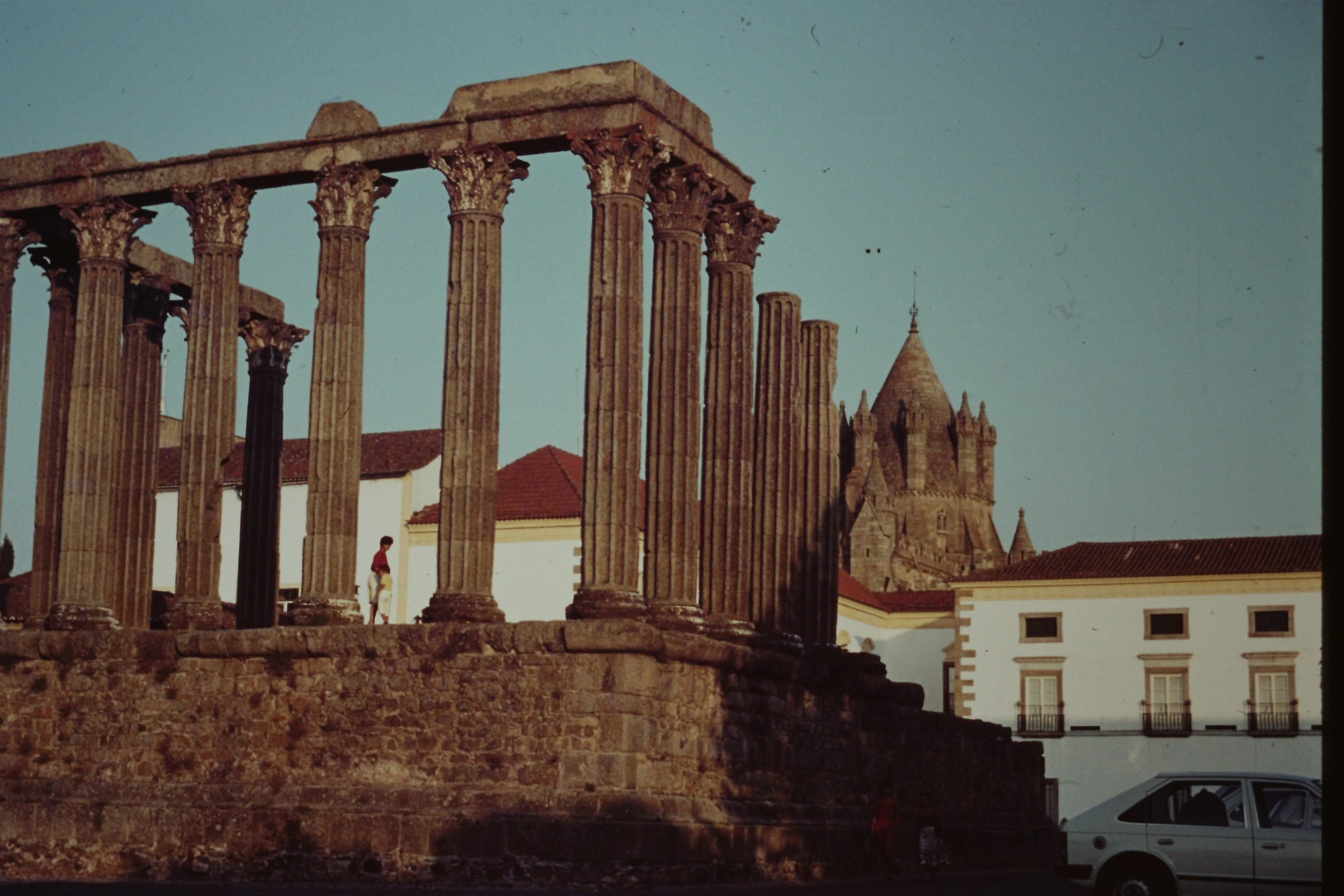
But we push further East, to find a cluster of towns often referred to as the marble belt, each with a charm of its own. Estremoz is a great spot to stop for lunch. You can choose to have it downtown in the main square, decorated with well-preserved buildings; or uphill in the castle, where you’ll be able to get a 360-degree view of the region.
Next up is Borba, famous for its wine and marble quarries that have been explored since the Roman occupation of the peninsula. Remember the Roman Temple in Évora? Well, guess where its marble came from.
And finally, Vila Viçosa. You might be surprised once you see the gigantic palace that made this town famous. You see, during the 17th century, it became the holiday spot for the Braganza Dynasty who ruled Portugal up until 1910.
If you look at the map, you’ll probably think that we can’t possibly go further East without crossing the border, but there’s one last surprise along the way. Elvas is another UNESCO site in the Alentejo, and well worth a visit. You can see the Spanish city of Badajoz with the naked eye as you stand on the impenetrable, star-shaped Nossa Senhora da Graça Fort. This fortification was particularly important in the past as a defense against Spain and later as a prison. It was recently restored and turned into a very interesting museum.
Most of the Eastern part of the Alentejo is particularly interesting because it played a big role in Portugal’s independence. You’ll find castles and fortifications on every other mountain or hilltop here, and some of them are incredibly picturesque, like Marvão and Castelo de Vide. Each of these, crested on top of rocky formations, provides us with some of the best views the region has to offer. They are also not really on the way anywhere, so they’re also spots where you can enjoy the silence that characterizes the region.
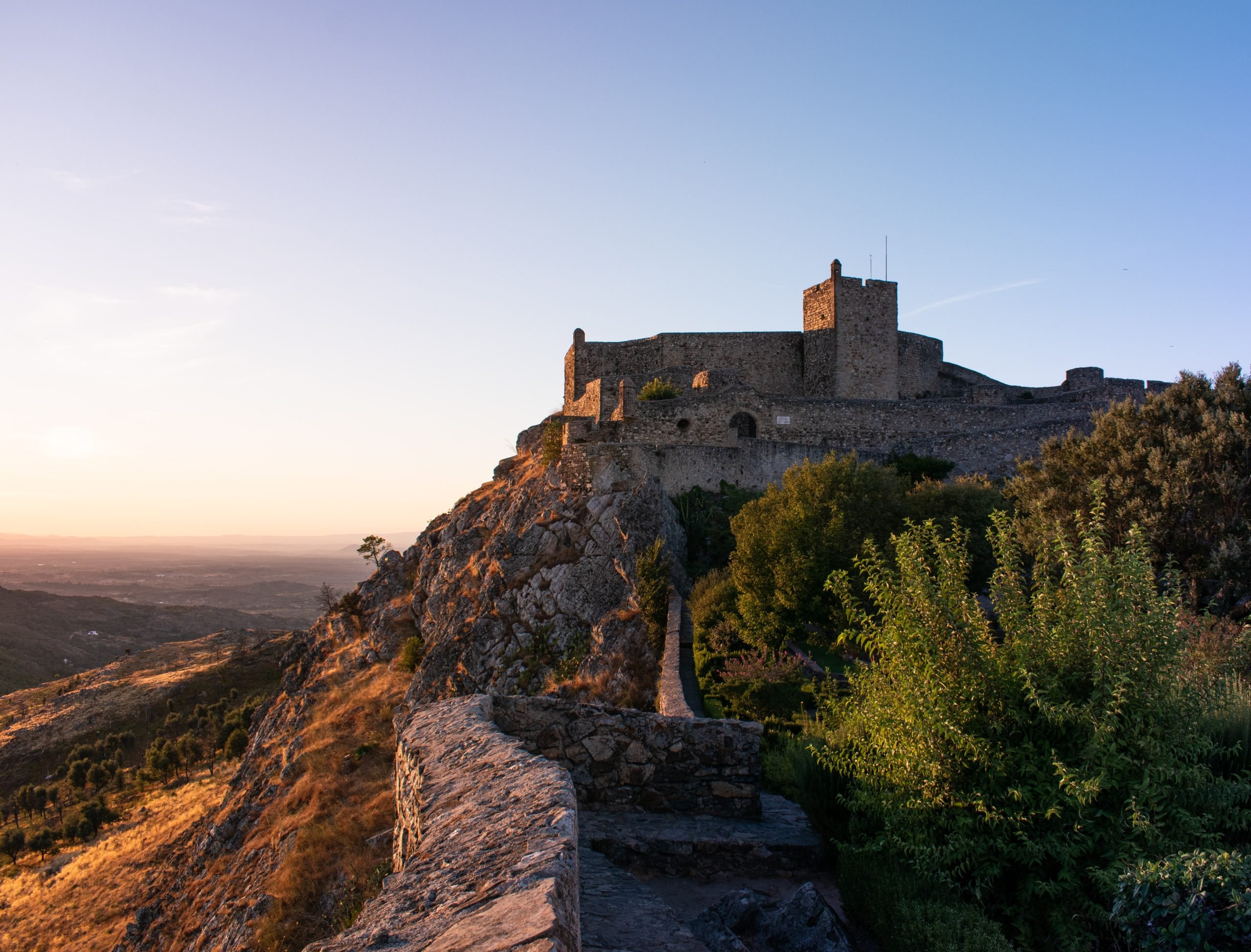
A bit further South you’ll find Monsaraz, another village on top of a hill. But this one is different because it stands facing what appears to be an oasis. The Alentejo is characterized by its golden plains, but the Alqueva Dam brought new life to this stretch of land by creating one of the largest artificial lakes in Europe. If you choose to visit during summer, you’ll quickly realize how handy having a body of water nearby is. The cool water is the perfect reinvigorating contrast against the scorching heat that often goes above 40 °C.
And while you’re around, I would like to invite you to visit my hometown of Moura, just a few miles downstream of the Alqueva Dam. This quaint little town has a lot to offer to the few who make the trip there. The medieval castle is built on top of human settlements that date back to the Iron Age and it witnessed Roman and Moir occupations before being conquered by the Christians in the 13th century.
In the Mouraria, you’ll find one of the most charming and unique traditions in the Alentejo where the residents put pots of flowers outside their homes, creating a colorful explosion against the white walls of the houses.
Now it’s time to feast. You can choose any of the nearby villages of Amareleja, Safara or Pias to try some of the most delicious dishes typical of the Alentejo. My suggestion? You can’t really go wrong with Migas de Entrecosto or an Açorda. Both dishes have bread, water, garlic, and herbs as key ingredients and are testimony of the tenacity and ingenuity of the people in the region, who were able to create mouth-watering meals with the little they had available.
In fact, the personality of the Alentejo people is often mocked by the rest of the country. “They have a funny accent,” they say, not realizing that our accent is a testimony of the Arabic and Spanish heritage in the region. “They are lazy,” they declare, unable to distinguish stoicism from sloth.
In fact, just a few days in the Alentejo will make you see how unique its people are. If you spend a few hours in a bar or a tavern, you’re bound to get an impromptu Cante concert and understand how deep this music genre goes and how it perfectly encapsulates centuries of history and shared experiences.
And history is something Mértola knows a thing or two about. Now a UNESCO candidate site, it perfectly encapsulates the whole history of the Alentejo, with Neolithic, Roman, Visigoth, and Muslim archeologic sites. Once one of the most important inland ports of the region, it took full advantage of the navigable Guadiana River to become a strategic commercial town.
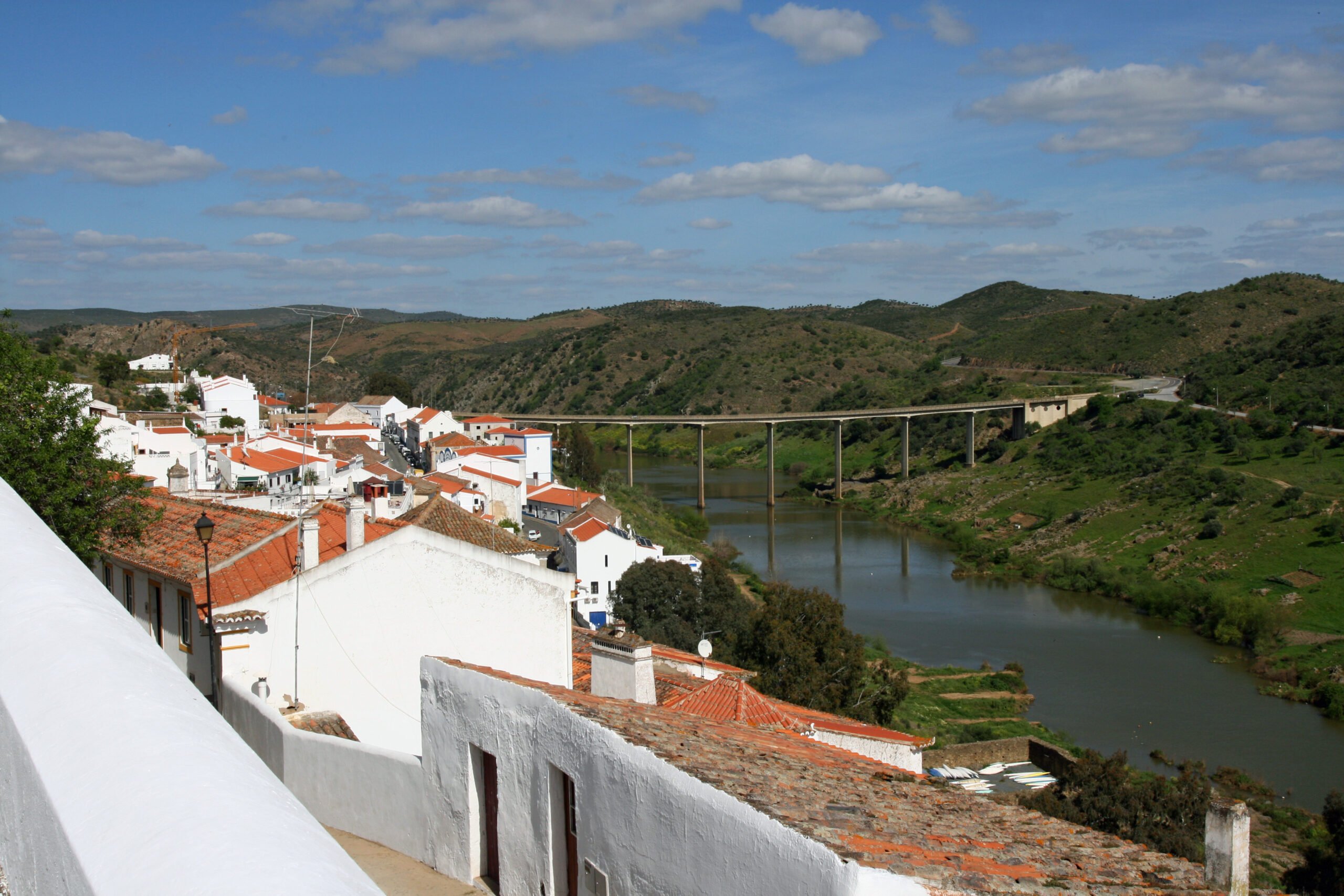
Nearby, the São Domingos Mine is worth a visit. This now-deactivated mine employed so many people that it even had its own village built. Now, it reinvented itself as a popular river beach that locals flock to as soon as summer arrives.
We’re down to the last leg of our journey as we head back West. The dry air starts to pick up some moisture and the cereal and earth smell fade as the salty breeze starts to take its place. After our tour, you’d probably never guess that we could see the ocean, right? But the truth is that the Alentejo actually boasts some of the best beaches in Portugal. And the city of Sines, the hometown of navigator Vasco da Gama, is a great base to explore the Southwest Coast. It is now one of the most important ports in the country, so it’s very well-connected and a booming place with music festivals and cultural events.
A few miles further south, you’ll find my two favorite beach towns in the Alentejo. Porto Covo is a small fishing village that has become a very popular summer spot. And even though it often becomes crowded nowadays, its church square is still one of the most picturesque places in the Alentejo, and the beaches nearby are breathtaking. There is even an island you can visit and explore. Vila Nova de Milfontes has grown to become one of the most popular towns in Southwest Alentejo given its charming houses, large beach, and affordable seafood.
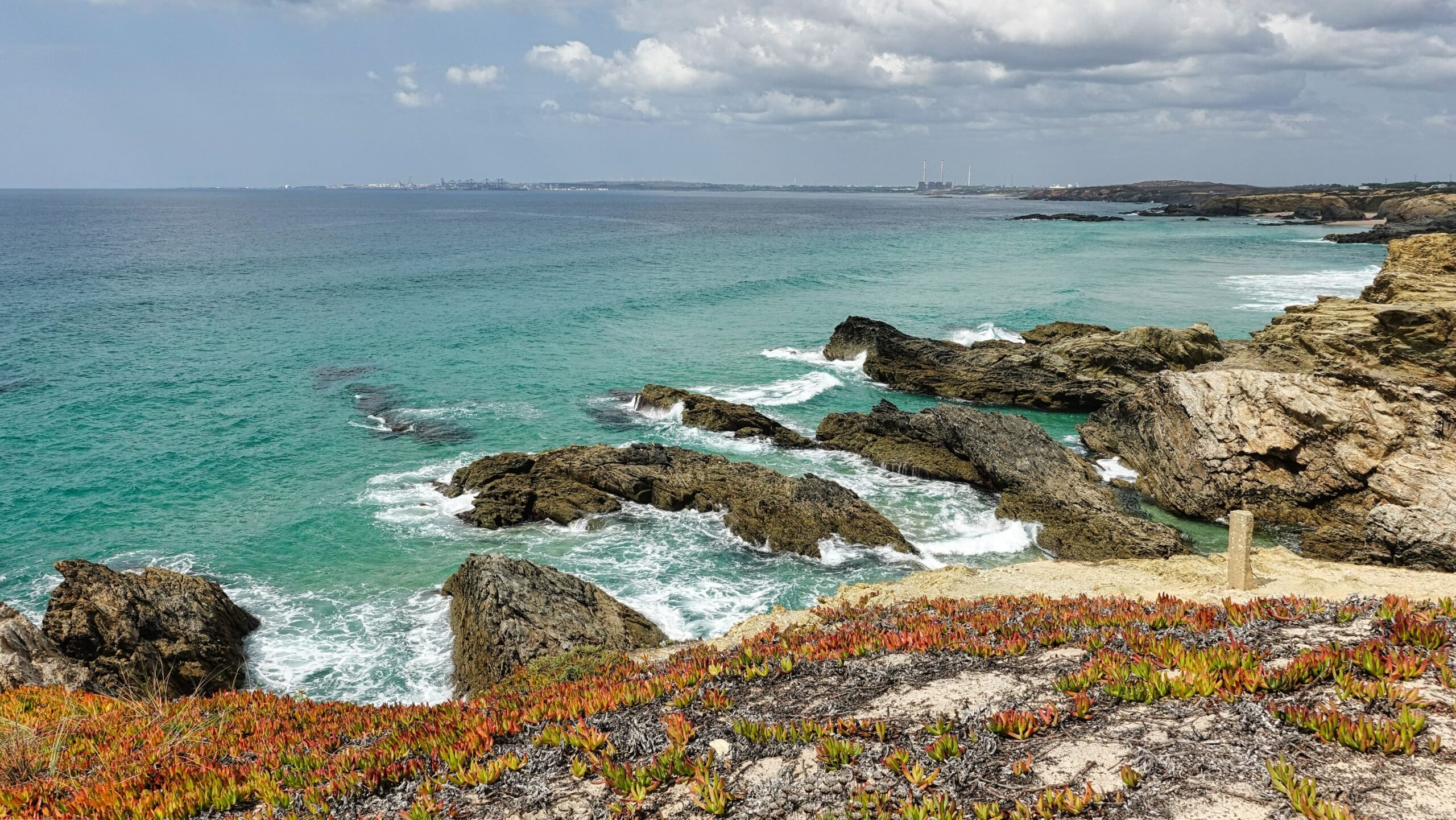
And there, sitting on the beach with a salty, warm breeze passing by as you watch the sunset on the horizon, Kipling reverberates: “Something lost behind the Ranges. Lost and waiting for you. Go!” By going off the beaten path and walking the least traveled road, you realize that your time was not lost but multiplied.
The choice is now yours to make. A thirty-minute drive down South will take you to the Algarve, whose fame precedes it. But the Alentejo is the largest region in Portugal and it has so much more to offer besides what was highlighted here, from its beaches to its quiet countryside or its white villages, there is something for everyone.
More than a destination, the region is a sensorial experience. The pure earthy air, the local gastronomy, the warm sun, the beautiful twilights, and the sound of birds chirping throughout the day are yours to enjoy.
So what will you do? Time is no issue in the Alentejo, so why not stretch it for a few more days?

